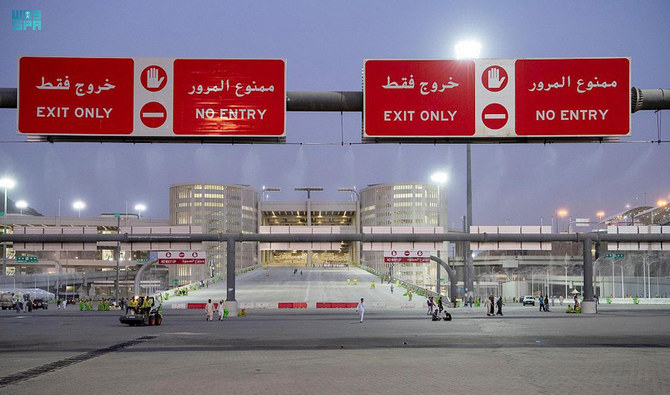Hajj1443 – Jamarat Bridge in Mina accommodates over 300,000 pilgrims per hour

The jamrah stoning service takes place from the 10th day of Dhul Hijjah (July 9) until before sunset on the 13th day of the month of Dhul Hijjah (July 12).
Jakarta (Indonesia Window) – Jamarat Bridge is a pedestrian bridge in Mina (about 12 kilometers from the Grand Mosque) which is used by pilgrims for two to three days to perform the stoning ritual.
The jamrah stoning service takes place from the 10th day of Dhul Hijjah (July 9) until before sunset on the 13th day of the month of Dhul Hijjah (12 July).
During the Hajj season of 1443 Hijri/2022 – which is performed by one million Muslims from all over the world – the Jamarat bridge has been prepared to accommodate more than 300,000 pilgrims per hour.
With this capacity, pilgrims can perform the ritual of stoning at the three pillars of the jamarat smoothly.
The jamrah stoning is a ritual in which worshipers throw pebbles at the three pillars (Jumrah Aqabah, Jumrah Wusta and Jumrah Ula), either from the ground or from a bridge.
Jamrah or jumroh is the singular form of Jamarat, the Arabic term for small pieces of rock or pebbles.

Jamarat Bridge
The construction of the Jamarat bridge began in early 2000, starting from ground level and one level of the bridge above which has three openings leading to the pillars. However, the limited space causes fatal accidents as more than 1 million people gather in the bridge area at the same time every year.
In 2006, the old bridge was demolished and construction expanded to build a new four-story bridge which was completed in December 2007. Construction continued until the bridge has five floors with a height of 13 meters for each floor.
The new bridge was designed by Dar Al-Handasah and built by the Saudi Binladin Group.





The new construction of the Jamarat bridge contains more column-free interior space, longer jamrah pillars, additional ramps and tunnels for easier access, a large canopy to cover each of the three pillars so as to protect worshipers from the hot desert sun, air conditioning (AC) to reduce the impact of the hot sun and cool the air, cold water taps along the path, and ramps adjacent to the pillars to speed up evacuation in emergency situations.
With this efficient construction, the capacity of the Jamarat bridge has increased to be able to accommodate 500,000 to 600,000 people per hour instead of the previous 200,000.
The total cost of constructing the high-tech Jamarat bridge is more than 4.2 billion Saudi riyals (equivalent to 16.7 trillion rupiahs).
Other facilities provided at the Jamarat bridge (the bridge building and the area connected to it) are 226 environmentally friendly electric vehicles to serve the pilgrims, because they will be available inside.
Source: Arab News; Saudi Gazette
Reporting by Indonesia Window

.jpg)








